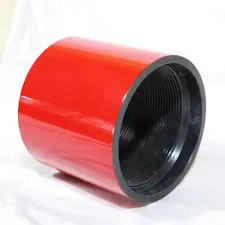- Afrikaans
- Albanian
- Amharic
- Arabic
- Armenian
- Azerbaijani
- Basque
- Belarusian
- Bengali
- Bosnian
- Bulgarian
- Catalan
- Cebuano
- Corsican
- Croatian
- Czech
- Danish
- Dutch
- English
- Esperanto
- Estonian
- Finnish
- French
- Frisian
- Galician
- Georgian
- German
- Greek
- Gujarati
- Haitian Creole
- hausa
- hawaiian
- Hebrew
- Hindi
- Miao
- Hungarian
- Icelandic
- igbo
- Indonesian
- irish
- Italian
- Japanese
- Javanese
- Kannada
- kazakh
- Khmer
- Rwandese
- Korean
- Kurdish
- Kyrgyz
- Lao
- Latin
- Latvian
- Lithuanian
- Luxembourgish
- Macedonian
- Malgashi
- Malay
- Malayalam
- Maltese
- Maori
- Marathi
- Mongolian
- Myanmar
- Nepali
- Norwegian
- Norwegian
- Occitan
- Pashto
- Persian
- Polish
- Portuguese
- Punjabi
- Romanian
- Russian
- Samoan
- Scottish Gaelic
- Serbian
- Sesotho
- Shona
- Sindhi
- Sinhala
- Slovak
- Slovenian
- Somali
- Spanish
- Sundanese
- Swahili
- Swedish
- Tagalog
- Tajik
- Tamil
- Tatar
- Telugu
- Thai
- Turkish
- Turkmen
- Ukrainian
- Urdu
- Uighur
- Uzbek
- Vietnamese
- Welsh
- Bantu
- Yiddish
- Yoruba
- Zulu
API Standards for Tubing and Casing Specifications and Guidelines
Understanding the API Tubing and Casing Chart A Key Tool in Oil and Gas Extraction
The oil and gas industry relies heavily on a variety of specifications and standards to ensure safe, efficient, and effective extraction processes. One such critical tool is the API (American Petroleum Institute) tubing and casing chart. This chart serves as an essential resource for engineers and professionals in the field, providing pivotal information necessary for selecting the right materials and understanding their applications in different contexts.
What is API Tubing and Casing?
Before delving deeper into the chart itself, it is important to understand what tubing and casing are. In oil and gas drilling, casing refers to the series of pipes that are installed in the wellbore to ensure the integrity of the well. It prevents the walls of the borehole from collapsing and protects the groundwater from contamination. Tubing, on the other hand, is the pipe through which produced fluids are brought to the surface. Proper selection of tubing and casing materials is vital; this ensures safety and efficiency and minimizes the risk of leaks and failures.
Significance of the API Chart
The API tubing and casing chart provides comprehensive specifications for various sizes and grades of API tubing and casing. The chart outlines essential metrics, including dimensions, weight, yield strength, and other physical properties critical for design and installation. By referencing this chart, engineers can make informed decisions regarding the appropriate casing and tubing types based on different well conditions and depths.
One of the most significant advantages of using the API chart is that it standardizes the measurement and grading of materials across the industry. This standardization fosters a consistent approach to drilling and completion operations, enabling companies to communicate more effectively and reducing the likelihood of errors in material selection. Key Components of the API Chart
The API tubing and casing chart includes several important components
api tubing and casing chart

2. Weight Weight measurements indicate the mass of the pipe per unit length. This is critical for understanding the structural integrity and handling characteristics of the tubing or casing.
3. Grade The chart provides standardized grading for tubing and casing materials. Each grade signifies the yield strength and tensile strength of the material, which dictates its suitability for specific conditions.
4. Wall Thickness This measure is vital for determining how the tubing or casing will perform under pressure and in different environmental conditions. Thicker walls generally indicate higher pressure ratings.
5. Connection Types The chart outlines the various connection types available for both tubing and casing, crucial for ensuring a tight, leak-free assembly.
Conclusion
In summary, the API tubing and casing chart is an invaluable tool in the oil and gas industry. By providing standardized information on various tubing and casing materials, it enables engineers and professionals to make informed decisions that enhance the safety and efficiency of drilling operations. For anyone involved in the extraction process, understanding how to read and utilize the API chart is essential. This not only contributes to successful operations but also underscores the importance of adhering to industry standards for the overall safety and sustainability of oil and gas production. As technology and methodologies evolve, the API standards continue to play a pivotal role, adapting to meet the needs and challenges of modern extraction techniques.
-
Tubing Pup Joints: Essential Components for Oil and Gas OperationsNewsJul.10,2025
-
Pup Joints: Essential Components for Reliable Drilling OperationsNewsJul.10,2025
-
Pipe Couplings: Connecting Your World EfficientlyNewsJul.10,2025
-
Mastering Oilfield Operations with Quality Tubing and CasingNewsJul.10,2025
-
High-Quality Casing Couplings for Every NeedNewsJul.10,2025
-
Boost Your Drilling Efficiency with Premium Crossover Tools & Seating NipplesNewsJul.10,2025







